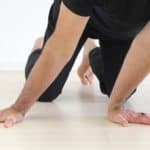We started promoting and teaching locomotion exercises over a decade ago.
Despite initially getting strange looks and skepticism at first glance, we’re happy to see that their use has gained traction.
While these animal movements, crawling, and quadrupedal motion exercises may still appear strange to those more accustomed to weight machines and cardio equipment, they offer great benefits for those interested in improving their movement and overall well-being. These exercises may seem intimidating and frustrating, especially if you can’t perform them as effortlessly as you see in videos or on social media.
You may think you’re not getting any benefit from them at all if this is the case. Thankfully, that’s wrong!
In fact, locomotive patterns have been utilized in various areas such as calisthenics, gymnastics, martial arts, and physical education, offering positive effects that extend beyond mere fun and games.
Gaining Resilience and Capability
The restrictions and decrease in capability we may feel are almost always due to a deficiency in one or more of the following:
- Adequate strength you can rely on at any time
- Reasonable flexibility and mobility through all your joints
- Confidence in your ability to move smoothly, with control through any range of motion
Locomotion exercise addresses each of these aspects to a significant level and degree. No they won’t make you as strong as an olympic weightlifter, or as flexible as a contortionist. But frankly, you don’t need those levels of abilities to move and feel better in all you do.
Just reflecting on that for a minute makes it obvious. To be more resilient and improve your current capacity, you don’t need to get to professional athlete status, you just need to do things that will work.
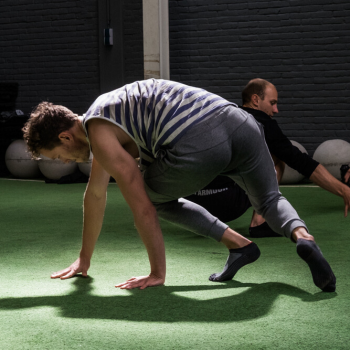 One key aspect of these movements is that they require you to place your hands on the ground, stimulating and challenging your upper body and core in a unique way compared to upright exercises. Locomotion work demands greater involvement of the spine and trunk in creating and managing dynamic forces. By placing your hands on the ground, your upper back is compelled to work and stabilize to maintain proper positioning.
One key aspect of these movements is that they require you to place your hands on the ground, stimulating and challenging your upper body and core in a unique way compared to upright exercises. Locomotion work demands greater involvement of the spine and trunk in creating and managing dynamic forces. By placing your hands on the ground, your upper back is compelled to work and stabilize to maintain proper positioning.
This particular stimulus is not always present in regular activities, and it significantly enhances the capacity of your upper spine to serve as a supportive platform for various physical endeavors.
Enter the Bear, Monkey, Frogger, and Crab
Let’s explore the four categories of locomotion exercises we teach and include in our programs.
These “animal” exercises, which involve moving your body through space while on all fours, offer more than just being good warm-ups. When performed with good intent and in a variety of ways, these exercises stimulate and develop high levels of strength, flexibility, and body control — aspects that are often overlooked in sport-specific or singular training programs.
Over the past 12 years, as we incorporated these exercises into our online programs, seminars, and workshops, we noticed that clients often began with the misconception that they had to perfectly mimic the movements they saw in demonstrations to derive any benefits.
But it’s not so much that you have to look and do them in the exact same way, but rather on understanding and embracing the key goals and intentions behind each movement.
Let’s delve into the intentions and goals associated with each exercise to help you maximize their benefits and seamlessly integrate them into your exercise routine.
The Bear
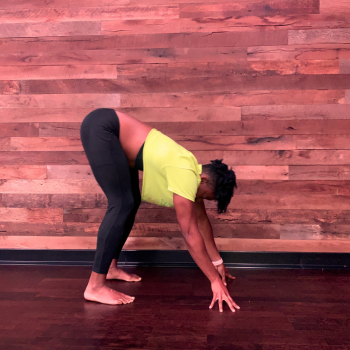 While it’s not wrong to focus on having your hips high or attempting to open your shoulders and straighten your knees, it’s crucial to recognize that the Bear serves a broader purpose.
While it’s not wrong to focus on having your hips high or attempting to open your shoulders and straighten your knees, it’s crucial to recognize that the Bear serves a broader purpose.
The main objectives of the Bear crawl include:
- Improving the connection between your shoulder blades and hands. This helps with strength and mobility in all reaching activities.
- Enhancing reciprocal cross-body movement, wherein the right hand moves with the left leg and vice versa. This action automatically improves your spinal mobility and stability.
Rather than fixating on the appearance of your knees or the degree of shoulder openness compared to others, keep these main intents in mind as you practice. Those are the main keys to success, and over time, you’ll notice improvements in your knees and shoulders along the way.
 The Cross Step Bear variation provides a great example of how Adele maintains the exercise’s core concepts without requiring a fully straight knee or hyper-flexible shoulders. By focusing on these intentions, you can experience all the benefits of the Bear.
The Cross Step Bear variation provides a great example of how Adele maintains the exercise’s core concepts without requiring a fully straight knee or hyper-flexible shoulders. By focusing on these intentions, you can experience all the benefits of the Bear.
The simple change of direction to moving backward, can help emphasize the pressure through your hands, thus enhancing the whole limb connection from your fingers to shoulder blades.
The Monkey
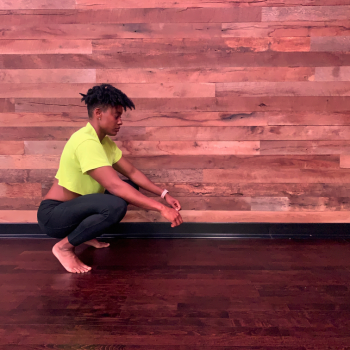 Observing someone perform the Monkey exercise in a deep squat and transitioning in and out of that position might lead you to believe that this is key to attaining its benefits. However, the Monkey exercise encompasses much more than just a deep squat.
Observing someone perform the Monkey exercise in a deep squat and transitioning in and out of that position might lead you to believe that this is key to attaining its benefits. However, the Monkey exercise encompasses much more than just a deep squat.
The main objectives of the Monkey exercise include:
- Developing differentiation between the upper and lower body, which improves coordination and awareness, especially in rotational movements. This skill is essential not only in throwing and racquet sports but also in activities requiring quick changes of direction, such as basketball and soccer.
- Facilitating proper weight shifting, which enhances the transfer of power from the lower to upper body and improves smoothness and coordination during transitions between movements in different directions.
Engaging in the Monkey exercise provides numerous benefits beyond the obvious squatting component. Adele’s execution of the Monkey exercise demonstrates how she maintains these concepts without necessarily achieving the deepest squat possible.
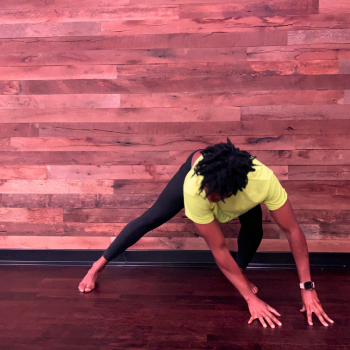 In the Long Leg Monkey variation, extending the leg out to the side further enhances your ability to feel the necessary weight shifts for smooth and graceful movements. This example also highlights the significance of focusing on external goals rather than fixating on specific muscle actions, leading to better learning and greater benefits from your movement practice.
In the Long Leg Monkey variation, extending the leg out to the side further enhances your ability to feel the necessary weight shifts for smooth and graceful movements. This example also highlights the significance of focusing on external goals rather than fixating on specific muscle actions, leading to better learning and greater benefits from your movement practice.
The Frogger
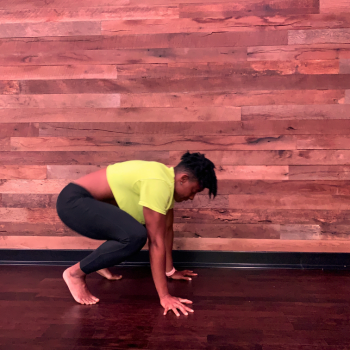 Similar to the Monkey exercise, the Frogger exercise emphasizes weight shifting. However, in this case, the focus shifts to forward and backward motions, further consolidating the connection between the upper and lower body.
Similar to the Monkey exercise, the Frogger exercise emphasizes weight shifting. However, in this case, the focus shifts to forward and backward motions, further consolidating the connection between the upper and lower body.
And just as in the Monkey, the main goal is not to have the deepest squat, or heels flat on the ground. Instead, the positioning and movement should emphasize feeling the connection between the push through your hands and the lift of your hips as you move in space.
This has nearly immediate benefits to actions where you require balance through your hands and awareness of the proper transfer of power from upper to lower body and vice versa.
The main objectives of the Frogger exercise include:
- Activating and coordinating the core muscles, particularly the abdominals and low back, during the “hopping” forward motion. This quick switching between primary movers is a crucial motor skill applicable to various movement patterns and enables more efficient energy utilization.
- Exploring weight shifting in the forward and backward planes. With varying hand positions, and playing with distribution of your weight either more on your heels or balls of your feet and everywhere in between, these explorations provide valuable sensory information.
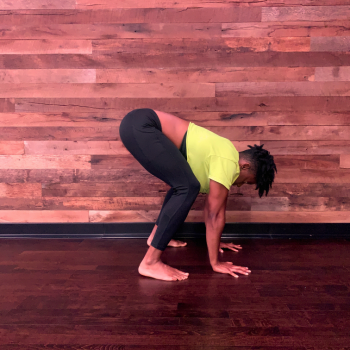 By practicing the Frogger exercise, you can improve core strength, coordination, and weight transfer with this unique movement pattern.
By practicing the Frogger exercise, you can improve core strength, coordination, and weight transfer with this unique movement pattern.
And you can see that the Straight Leg Frogger variation takes you out of the deep squat position entirely, enabling a heightened focus on weight shifting.
The Crab
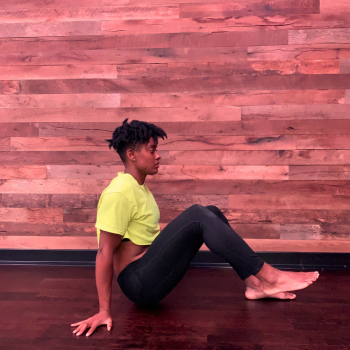 In the Crab exercise, the intentions align with those of the Bear exercise but in an inverted position. Spending a considerable amount of time pushing our hands behind our backs with significant force is a rare occurrence in daily life, making this exercise challenging initially. However, it offers unique benefits that can be experienced even without expansive movement.
In the Crab exercise, the intentions align with those of the Bear exercise but in an inverted position. Spending a considerable amount of time pushing our hands behind our backs with significant force is a rare occurrence in daily life, making this exercise challenging initially. However, it offers unique benefits that can be experienced even without expansive movement.
The main objectives of the Crab exercise include:
- Enhancing strength and coordination with your limbs in extension as you reach behind you.
- Sensitizing yourself to weight shifts and transfers in this distinct position. Sports and activities when you need to grab and push behind you (preventing a tackle in football/soccer) or even simply pushing yourself up off the ground need this awareness and capability.
By familiarizing yourself with the positioning, movement, weight shifting, and coordination involved in the Crab exercise, you can experience its strengthening and coordination benefits. Adele demonstrates a marching-in-place variation, emphasizing the importance of performing the exercise slowly to feel the required weight shifting throughout your body. Pay attention to the pressure and sensations as you transfer weight from one hand and leg to the other.
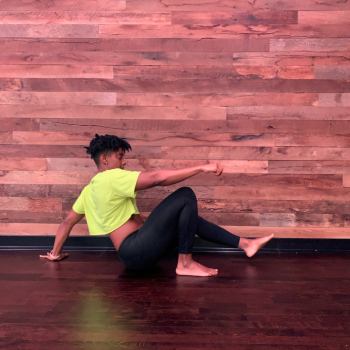 The Long Leg Crab variation introduces anterior and posterior weight shifting, further assisting you in adapting to movement in this position. In our Elements program, you’ll also explore forward, backward, left, and right variations of the Crab exercise.
The Long Leg Crab variation introduces anterior and posterior weight shifting, further assisting you in adapting to movement in this position. In our Elements program, you’ll also explore forward, backward, left, and right variations of the Crab exercise.
Incorporating locomotion exercises such as the Bear, Frogger, Monkey, and Crab into your exercise regimen can significantly improve your body’s resilience and capacity. Remember that the focus should not solely be on mimicking others’ appearances but on understanding the key intentions and goals of each movement. By embracing these intentions, you can fully experience the benefits of improved mobility, strength, flexibility, and body control.
Locomotion exercise instills body confidence by challenging you to embrace new movement patterns and push beyond your comfort zone. As you progress in your practice, you’ll notice enhanced body awareness, coordination, and control, allowing you to navigate any physical challenge with grace and poise.
Build A Confident Capable Body
Our Elements program encompasses full body movement patterns to improve confidence in your ability to move smoothly and with control through any range of motion.



